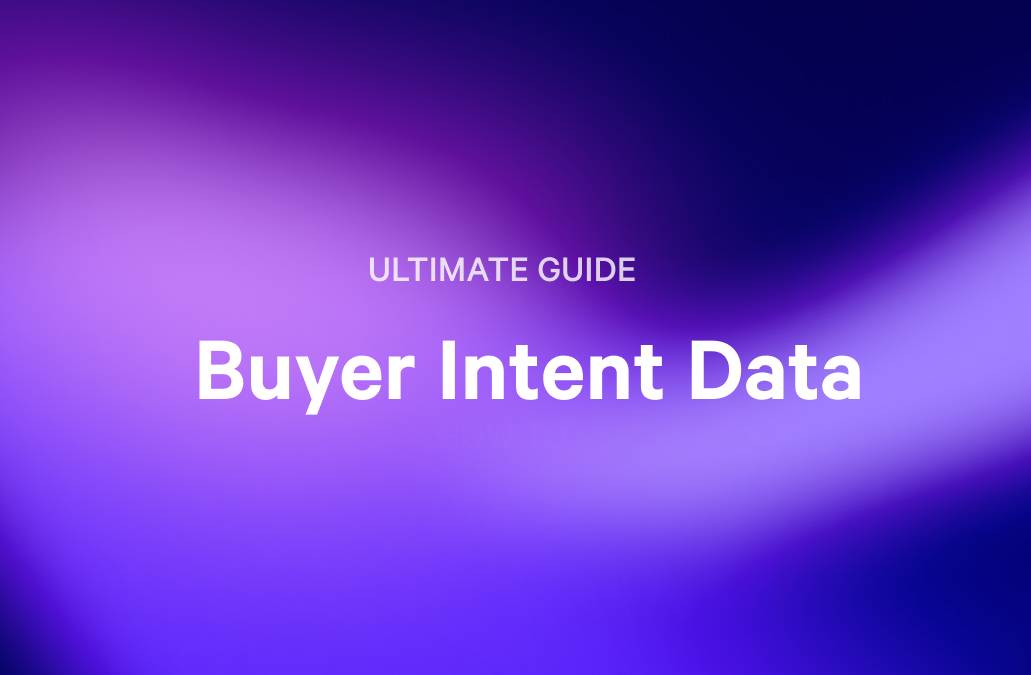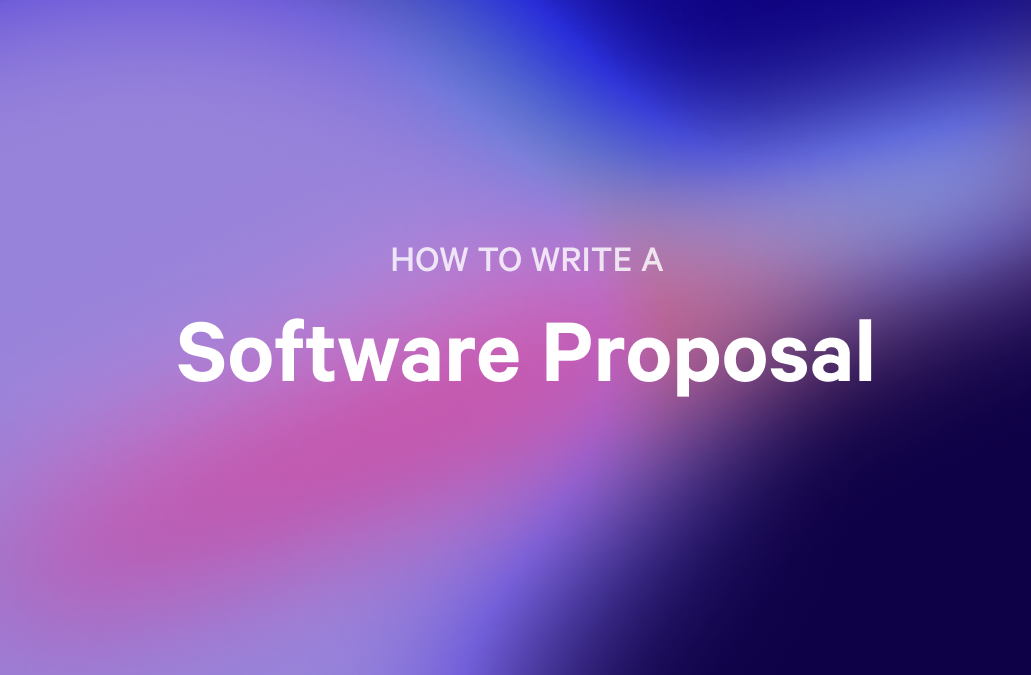If you sell advertising services, you know how hard it can be to catch and keep your prospect's attention. Even with the best idea and offer, you must ensure your proposal stands out and captures the client's interest.
How do you do that? If you've ever wondered how to create a compelling advertising proposal that outshines the competition, or if you've been writing proposals for years and are concerned that your proposals are getting stale, this article is for you.
What is an advertising proposal?
An advertising proposal is a document advertising agencies use in their sales process to outline challenges, campaign ideas, budgets, and other important details to potential clients. The main goal of an advertising proposal is to convince prospective customers your agency is the right choice for their business.
A well-written sales proposal clearly communicates the agency's understanding of the client's needs and objectives and the services it can provide to meet those needs. The proposal also showcases the agency's experience and expertise in creating effective advertising campaigns.
Qwilr's advertising proposal template below can be used to supercharge your sales productivity.
The ten steps to writing an advertising proposal: Key elements to include
Writing an advertising proposal might have been romanticized by shows like 'Mad Men.' But modern-day, smart, agencies know sealing the deal on ad services is as much related to the process as it is to the creative side of things.
The best business proposals follow a certain structure. So, if you want to make sure your sales proposals win your agency the business, follow these ten steps:
1. Research, interview, and understand
The first step in crafting an effective advertising proposal is to thoroughly research, interview, and understand your potential client. This entails all of the activities that lead to gaining a comprehensive understanding of the client's business, pain points, target market, competitors, and overall industry landscape.
We cannot understate the importance of this step. The more detailed and accurate your knowledge, the better positioned you are to craft a proposal that directly addresses the client's needs and challenges. Most effective sales methodologies start with this in mind.
Furthermore, demonstrating this understanding in your proposal instills confidence in your agency's capabilities and builds trust, paving the way for a successful business relationship.
2. Outline the challenge
The next part of writing an advertising proposal involves outlining the challenge. This phase is critical because it helps you define the specific problem or obstacles the client is facing that your agency aims to address. Examples of challenges your prospect might be facing include:
- Low brand awareness
- Stagnant sales
- Ineffective previous advertising campaigns
- Smaller share of the total market
- Customer churn
Read Next: Proposal Outlining
3. Set clear goals
Setting SMART (Specific, Measurable, Achievable, Relevant, Time-bound) goals is integral to an effective advertising proposal. These goals provide a clear, structured, and practical framework to guide the direction of the entire campaign. They help you identify what needs to be achieved, how the success will be measured, and the timeline for accomplishment.
More importantly, ensure your goal explanation is based on a mutual understanding between the agency and the client. Both parties should have clear expectations, reducing potential misunderstandings. By presenting well-defined, realistic, and time-oriented goals in your proposal, you inspire confidence in your potential client and set the stage for an accountable, transparent, and result-oriented working relationship.
4. Run a situational assessment
A situational assessment is a detailed analysis of the market conditions, customer behavior, and competitor strategies that might impact the advertising campaign. Conducting this assessment is crucial as it equips the agency with insights to devise an advertising strategy that effectively caters to existing market conditions and customer preferences.
5. Explain your advertising strategy
This is where you spotlight your strategic skills and show your prospect your ideas. Remember to include your suggestions and research findings for:
Media marketing selection and placement
This step is crucial as it directly influences the reach and impact of the campaign, playing a significant role in maximizing visibility, engagement, and return on advertising spend.
Target audience analysis
You must show your customer the target audience you have identified, why they are relevant to their business, and how your campaign will appeal to them. This enables you to present a tailored message that resonates with the target customer base.
Ad content & content creative
This is the fun part! Now it's time to present your creative ideas for the advertising campaign. This could include concepts, slogans, visuals, and other elements that will capture the attention of your target audience and effectively relay the message.
Performance metrics & monitoring
This is a critical element of your advertising strategy as it highlights the importance of tracking and measuring performance throughout the campaign. This ensures accountability and allows for timely adjustments to optimize results.
6. Explain how your agency can help
Once you've gone through your proposed advertising strategy, now is the time to showcase your agency's services and capabilities. Explain how your agency is uniquely positioned to deliver on the campaign and support the client's business goals. Whether you specialize in social media, PPC, podcast production or offer a full suite of digital marketing services, this is where you want to tell your prospect about all you do.
Specify tasks & services
Outline your agency's tasks and services to bring the campaign to life. This could include market research, creative development, media buying, and other advertising-related services. Clearly defining your services gives the prospect a better idea of how your agency will execute the campaign. It also helps you avoid any misunderstandings or scope creep in the future.
Illustrate your proposed timeline
Show your prospect you're on top of this plan! Provide a detailed timeline that outlines each step of the campaign, from research and strategy development to execution and performance measurement. This helps manage expectations and gives your potential clients a clear understanding of when they can expect results.
Include policy clarifications
Make sure everything is crystal clear by including policy clarifications in your advertising proposal. This could include information on payment terms, cancellation policies, and other terms or conditions that might affect the agreement.
7. Introduce your team
Although this shouldn't be an extensive element of your advertising proposal, introducing your team is a crucial part of building trust and credibility. Provide brief bios or profiles of key team members working on the campaign, highlighting their experience, skills, and expertise. Also, do a quick overview or case study of your agency's most successful campaigns (and their results.)
8. Incorporate social proof
Social proof sells. It builds trust, gives you credibility, and helps create an emotional connection with your potential client. Including testimonials, case studies, or any other form of social proof in your advertising or digital marketing proposal can increase the chances of winning the project.
9. Break down the pricing
Be transparent about your pricing. Explain how much everything costs and what your customers get for the money. The emphasis should lie on the value you're offering, not how much your potential customer is spending -- and that's why pricing comes last. So far, you've done a great job at outlining your ideas, strategy, and team. Now, it's time to show how much the investment is worth.
10. Close with a call to action (CTA)
The final section of your proposal will tell your prospective client what to do next. If they're ready to get started, they can accept your proposal and move on to a contract or onboarding. If they want to talk more about your ideas and provide some feedback, tell them specifically who to reach out to (and by when).
Skipping the call to action means that your prospective customers might let your proposal go by the wayside because they're not sure what to do next.
Example of an advertising proposal template
Looking for an advertising proposal template to supercharge your sales productivity?
Qwilr's interactive proposal template for advertising agencies has everything you need to turn your proposal writing process into a repeatable success. In short, this proposal template includes:
- A great design (which you can customize without writing a single line of code)
- A structure that covers everything your prospect needs to know
- Ready-to-use sections and examples
- Interactive pricing tables with (optional) e-signature functionality
- An electronic signature field that is easy to embed
- Payments & invoicing integration, if you need to get paid upfront
Alternatively, you can try our AI proposal generator for free and spin up a professional looking proposal in minutes
FAQs
What’s the best format for an advertising proposal?
The best format for an advertising proposal is straightforward and easy to understand. Start by outlining your understanding of your prospect's challenges and recommendations for overcoming them. You should then explain how you will measure success and what your anticipated project plan will look like. Outline all costs and fees associated with your proposal and end with a clear call to action so your prospect knows what to do next.
Creating winning advertising proposals for your agency today
Many things have changed since the golden age of advertising in the 1960s. But if there's one thing that has only grown more poignant, it's this: competition is fiercer than ever. This is why you need to bring your top game into every single step of the sales process.
If you want to leave competing agencies in the rearview, you need to plan well, ensure consistency, and focus on the key ideas behind your prospect's product and audience rather than technicalities. Switching to an interactive advertising proposal template will give you the framework to save time, stay focused, and design proposals that hook potential customers and win more deals for your agency.
About the author

Brendan Connaughton|Head of Growth Marketing
Brendan heads up growth marketing and demand generation at Qwilr, overseeing performance marketing, SEO, and lifecycle initiatives. Brendan has been instrumental in developing go-to-market functions for a number of high-growth startups and challenger brands.


